Your Complete Guide to The North Face Fall & Winter Hiking Gear—Featuring Top-Rated North Face Jackets, North Face Puffer, North Face Backpacks & North Face Boots Tested in Real Trail Conditions.
TESTED Updated November 2025
As outdoor gear specialists based in Michigan’s harsh weather testing grounds, we understand that The North Face has earned its reputation through decades of proven performance in extreme conditions.
We’ve spent months testing north face hiking gear across brutal fall storms and frigid winter trails because these conditions reveal which equipment truly performs when the weather turns serious.
North face jackets, north face backpacks, and north face boots aren’t just popular—they represent engineering solutions to real outdoor challenges that hikers face from October through March.
This guide focuses exclusively on The North Face’s most proven fall and winter hiking equipment, backed by real-world testing data and thousands of verified user reviews from actual trail conditions.
We’ve analyzed top-selling North Face products to identify which pieces deliver genuine performance advantages rather than just brand recognition.
Whether you’re a weekend trail explorer, serious backcountry hiker, or someone building their first cold-weather hiking kit, this guide provides the specific North Face gear that excels in fall and winter conditions.
🎯 What Makes North Face Gear Essential for Fall & Winter Hiking?
North Face vs. Standard Hiking Gear: The Performance Gap
North Face gear consistently outperforms budget alternatives in the conditions where it matters most—sustained exposure to cold, wind, and precipitation.
The difference becomes obvious after your third wet hike when your north face jacket still breathes properly while cheaper alternatives have lost their water repellency.
The North Face invests in proprietary technologies like Futurelight and DryVent that maintain performance through repeated use and washing cycles.
- Durability Under Stress: North face jackets and backpacks feature reinforced high-wear areas that survive abrasion from pack straps and rocky scrambles rather than failing after a single season.
- Weather Technology: DryVent and Futurelight membranes provide genuine waterproof protection while maintaining breathability during high-output activities, not just standing still.
- Cold Weather Engineering: ThermoBall insulation and proper shell construction maintain warmth even when wet, unlike down alternatives that collapse in moisture.
Why North Face Dominates Fall & Winter Hiking
The North Face built its reputation in alpine environments where gear failure means serious consequences, not just discomfort.
This heritage translates directly to fall and winter hiking where temperature swings, sudden weather changes, and prolonged exposure test equipment limits.
- Proven Waterproofing that actually works through multiple seasons, not just the first few uses before DWR coatings wash out.
- Breathable Insulation that regulates temperature during active hiking rather than forcing you to constantly layer and delayer.
- Suspension Systems in north face backpacks that distribute weight properly during long approaches with winter gear loads.
The investment in North Face gear pays off through extended lifespan and consistent performance rather than needing replacement every season.
⚙️ Our Testing Methodology: Michigan Trails to Your Adventures
At Outdoor Tech Lab, we test North Face gear through actual fall and winter hiking conditions in Michigan’s challenging climate zones.
Our testing process spans months of real trail use, from lake-effect snow squalls to freezing rain and temperature swings that stress gear performance.
We evaluate North Face products against the same criteria experienced hikers use—reliability, durability, and performance when conditions deteriorate.
- Cold Weather Performance: We test north face jackets and insulation through temperature ranges from 15°F to 45°F to verify comfort zones match marketing claims.
- Waterproof Verification: Extended exposure to rain and wet snow reveals which North Face products maintain waterproof integrity versus those that wet out.
- Breathability Testing: High-output hiking with winter layers shows which north face jackets actually breathe versus trapping moisture inside.
- Durability Assessment: Repeated use with loaded backpacks on rocky terrain identifies weak points in construction before they become field failures.
- Weight Distribution: North face backpacks carry winter gear loads on actual approaches to verify suspension systems perform under realistic conditions.
- Traction Analysis: North face boots face wet rocks, muddy descents, and icy trails to test grip patterns beyond flat surfaces.
🏆 Essential North Face Gear for Fall & Winter Hiking
These North Face products represent the core equipment you need for reliable fall and winter trail performance.
| Product Category | Best Model | Rating | Key Technology | Best For | Temp Range |
|---|---|---|---|---|---|
| Waterproof Shell | Antora Jacket | 4.7/5 ⭐ | DryVent 2L | Rain & Wind | 35°F – 50°F |
| Insulated Layer | Aconcagua 3 Puffer | 4.6/5 ⭐ | Hybrid Insulation | Cold Weather | 15°F – 35°F |
| Day Pack | Borealis Backpack | 4.8/5 ⭐ | FlexVent Suspension | Day Hikes | 28L Capacity |
| Winter Boots | Snowfuse Boot | 4.4/5 ⭐ | Waterproof EVA | Snow & Ice | 0°F – 30°F |
North Face Antora Waterproof Jacket
Best North Face Jacket for Fall & Winter Rain Protection
The North Face Antora Jacket delivers proven waterproof performance through DryVent 2-layer technology that maintains breathability during high-output hiking.
With over 650 verified reviews averaging 4.7 stars, this north face jacket represents reliable rain protection at a reasonable price point for serious hikers.
The recycled nylon ripstop construction with non-PFC DWR finish provides environmental responsibility without compromising performance on wet trails.
Seam-sealed construction ensures water doesn’t penetrate through stitching during prolonged exposure to rain and wet snow common in fall conditions.
The adjustable 3-piece hood provides helmet-compatible coverage for winter conditions while the Alpine-style hand pockets keep essentials accessible during storms.
Available in both men’s and women’s specific fits, the Antora accommodates layering without restricting movement during technical approaches.
Real-world waterproof test: DryVent technology in action on the North Face Antora Jacket
North Face Aconcagua 3
Best North Face Puffer Jacket for Cold Weather Hiking
The north face puffer jacket known as the Aconcagua 3 provides reliable hybrid insulation that maintains warmth even when damp, making it essential for unpredictable fall weather.
This north face hoodie combines 600-fill recycled down with synthetic insulation in a strategic 50/50 blend—down in the core for maximum warmth, synthetic in the hood and sides for wet-weather reliability.
Unlike pure down puffer jackets that collapse when wet, this hybrid insulation continues providing thermal protection during snow and rain exposure.
The fitted hood adds critical warmth retention without restricting visibility or movement during technical sections of trail.
Highly breathable construction prevents overheating during high-output climbs while maintaining insulation during rest breaks in cold conditions.
This jacket works equally well as a standalone piece during dry cold or as an insulating mid-layer under a shell during storms.
The packable design compresses efficiently for storage in your north face backpack when temperatures warm during midday hiking.
WindWall fabric construction provides wind resistance while the recycled polyester with non-PFC DWR finish adds water repellency for light precipitation.
North Face Borealis Backpack
Best North Face Backpack for Day Hiking
The north face borealis backpack dominates Amazon’s top-seller rankings with 6,786 reviews and a 4.8-star average for genuine reasons—it simply works reliably for day hiking.
This north face backpack hits the perfect 28-liter capacity for fall and winter day hikes, carrying extra layers, emergency gear, and hydration without excess bulk.
FlexVent suspension system features articulated shoulder straps and a ventilated back panel that distributes weight properly during long approaches with winter gear.
American Chiropractic Association certification confirms this suspension system reduces shoulder and back strain during extended wear with loaded packs.
Water-repellent finish sheds light rain and snow while external fleece-lined pockets protect electronics and small items from moisture.
The external bungee system provides quick access to rain shells or insulating layers you need frequently during variable fall conditions.
Two external water bottle pockets double as storage for trekking poles or other gear during winter hiking when hydration needs decrease.
North Face Snowfuse Winter Boot
Best North Face Boots for Winter Trail Conditions
The north face boots known as the Snowfuse provide genuine waterproof protection and insulation specifically engineered for winter hiking, snowshoeing, and cold-weather trail conditions.
The lightweight EVA shell construction reduces fatigue during long approaches while maintaining protective durability against rocks and roots hidden under snow.
Waterproof construction keeps feet dry during creek crossings and slushy trail conditions that destroy non-waterproof alternatives.
Insulation maintains foot warmth during rest breaks and slow-paced winter hiking when circulation decreases and cold penetrates standard hiking boots.
The EVA sole provides reliable traction on packed snow and icy sections without requiring aggressive lugs that compromise stability on rocky terrain.
These north face boots balance winter-specific features with general hiking capability, making them versatile for variable fall and winter conditions.
🧥 Understanding North Face Jacket Technologies
The North Face uses specific fabric technologies that determine jacket performance in different conditions—understanding these helps you choose correctly.
North Face Waterproof Technologies Explained
PREMIUM Futurelight Technology
- Best breathability available – Nano-spinning process creates microscopic air pathways
- Completely waterproof – Seam-sealed construction prevents water penetration
- High-output performance: Maintains comfort during aggressive hiking with heavy packs
- Premium investment: Worth the cost for serious year-round hiking
PROVEN DryVent 2-Layer (Antora Jacket)
- Reliable waterproof protection – Proven performance across thousands of users
- Good breathability – Adequate for most hiking paces and conditions
- Excellent value – Professional performance at accessible pricing
- Best choice for most hikers – Balances cost and capability perfectly
VERSATILE Venture 2 System
- Basic waterproof protection – Entry-level North Face quality
- Budget-conscious option – Good for occasional use
- Limited breathability – Best for light activity or emergency use
- Packable design – Compresses well for backup shell storage
💡 Pro Tip: Layering with North Face Jackets
Smart hikers use a three-layer approach for fall and winter conditions:
- Base layer: Moisture-wicking synthetic or merino wool against skin
- Insulation layer: North Face Aconcagua 3 Hoodie for warmth retention
- Shell layer: North Face Antora Jacket for wind and rain protection
- System flexibility: Add or remove layers as conditions and effort levels change
🎒 North Face Backpack Features That Matter
North face backpacks incorporate specific design elements that improve comfort and functionality during loaded hiking.
FlexVent Suspension System
The FlexVent suspension in the north face borealis and similar backpacks provides genuine ergonomic advantages during extended hiking.
- Articulated shoulder straps: Follow natural shoulder movement rather than digging into muscles during long carries
- Ventilated back panel: Creates airflow channels that reduce sweating under pack loads
- Proper weight distribution: Transfers load to hips rather than hanging entirely from shoulders
- ACA certification: American Chiropractic Association verification confirms ergonomic design principles
Organization Features in North Face Backpacks
- External bungee system: Quick storage for wet or frequently accessed layers without opening main compartment
- Fleece-lined pockets: Protect electronics and small items from scratching and moisture
- Dual water bottle pockets: External access maintains hydration without removing pack
- Laptop sleeve: Useful for trailhead-to-office transitions common with weekend hiking
👢 Choosing the Right North Face Boots
North face boots serve different purposes—matching boot type to your specific fall and winter hiking needs ensures proper performance.
Winter-Specific Features in North Face Snowfuse Boots
The Snowfuse boot incorporates design elements specifically engineered for winter hiking rather than just standard trail boots.
- Insulation layer: Maintains foot warmth during static periods without overheating during active hiking
- Waterproof construction: Complete sealing prevents moisture penetration from snow melt and wet conditions
- EVA shell design: Lighter than traditional leather while maintaining protective durability
- Winter traction pattern: Sole design balances grip on snow and ice with stability on rocky terrain
North Face Boots vs. Standard Hiking Boots
Traditional hiking boots designed for three-season use lack specific features necessary for reliable winter performance.
- Temperature management: Winter boots include insulation layers that standard boots omit for weight savings
- Waterproofing integrity: Cold weather boots use construction methods that maintain flexibility in freezing temperatures
- Gaiter integration: Winter-specific boots feature higher cuffs and gaiter attachment points for deep snow
- Sole compound: Rubber formulations remain flexible in cold rather than hardening and losing grip
🧤 Completing Your North Face Winter Hiking Kit
Beyond north face jackets, backpacks, and boots, several essential accessories complete a functional winter hiking system.
Critical Cold Weather Accessories
- North Face Jim Beanie: Fleece-lined construction provides reliable head warmth without overheating during active hiking—a top-seller for genuine reasons
- Insulated gloves: Waterproof shell with removable liner provides versatility for variable temperatures and activity levels
- Neck gaiter or buff: Protects exposed neck area where jacket collars leave gaps during wind exposure
- Merino wool base layers: Natural moisture management and odor resistance superior to synthetic alternatives for extended trips
- Quality multitool: Essential for gear repairs and emergency situations—check our guide to the best multitools for hiking and backpacking
- Trekking poles: Stability on icy descents and stream crossings becomes crucial when trails ice over
For hikers with specific needs, explore our specialized guides including hiking gear for seniors and solo female hiking safety equipment to ensure you have the right protection for your adventures.
Frequently Asked Questions About North Face Hiking Gear
Are north face jackets actually waterproof or just water-resistant?
North face jackets using DryVent or Futurelight technology are genuinely waterproof with seam-sealed construction, not just water-resistant. The Antora Jacket maintains complete waterproof protection during sustained rain exposure, while water-resistant jackets only shed light moisture temporarily.
How does the north face borealis backpack compare to other hiking daypacks?
The north face borealis dominates because its FlexVent suspension system distributes weight better than most competitors in this price range. The 28-liter capacity hits the perfect size for day hiking with winter gear, and the 6,786 verified reviews averaging 4.8 stars reflect genuine field reliability.
What temperature range works best for north face winter hiking boots?
The north face boots like the Snowfuse perform optimally in temperatures from 15°F to 35°F during active hiking. Below 15°F you may need additional insulation or warmer socks, while above 35°F the insulation can cause overheating during high-output hiking.
Do north face jackets run true to size for layering?
North face jackets typically run true to size with room for layering. The Antora Jacket accommodates a mid-layer like the Aconcagua 3 Hoodie underneath without restricting movement. If you plan heavy layering or prefer looser fit, consider sizing up one size.
How long does DWR coating last on north face jackets?
DWR coating on north face jackets typically maintains effectiveness for one to two seasons of regular use before requiring reapplication. Washing with technical fabric detergent and periodic DWR reapplication extends jacket performance. The waterproof membrane underneath continues working even when DWR wears off.
Can the north face borealis hold enough gear for winter day hikes?
The 28-liter north face borealis capacity works perfectly for winter day hikes when you need extra layers, emergency gear, and food. The external bungee system adds overflow capacity for bulky items like insulated jackets. For overnight trips or extended winter camping, you need larger packs like North Face multi-day models.
Are north face boots good for ice and packed snow traction?
North face boots like the Snowfuse provide reliable traction on packed snow and moderate ice through their EVA sole design. For serious ice conditions or steep icy terrain, add microspikes or crampons. The boots excel on mixed winter conditions with snow, mud, and rocks rather than pure ice climbing.
How does the north face puffer jacket insulation work in wet conditions?
The Aconcagua 3 puffer jacket uses a hybrid 50/50 blend of 600-fill recycled down and synthetic insulation. The down provides maximum warmth in the core, while synthetic insulation in the hood and sides maintains performance when wet. This combination offers better reliability than pure down puffer jackets during unpredictable fall and winter weather.
How does synthetic insulation in north face jackets compare to down?
Synthetic insulation maintains warmth when wet, unlike down which collapses and loses insulating properties. For unpredictable fall weather with rain and snow, synthetic or hybrid insulation like in the Aconcagua 3 provides more reliable performance. Pure down offers better warmth-to-weight ratio only in consistently dry, cold conditions.
What makes north face gear worth the premium price over budget alternatives?
North face gear delivers extended durability and consistent performance that budget alternatives cannot match beyond the first season. The Antora Jacket maintains waterproofing through years of use, while cheaper jackets fail after months. Over three to five years of hiking, North Face equipment proves more cost-effective than repeatedly replacing failed budget gear.
🔧 Maintaining Your North Face Gear for Maximum Lifespan
Proper maintenance extends North Face gear performance and protects your investment through multiple seasons.
Washing North Face Jackets Correctly
- Use technical fabric detergent: Regular detergents leave residue that clogs waterproof membranes and reduces breathability
- Avoid fabric softener: Permanently damages DWR coating and waterproof membrane functionality
- Wash in cold water: Hot water can degrade waterproof treatments and adhesives in seam tape
- Tumble dry low heat: Reactivates DWR coating and restores water-shedding performance
- Reapply DWR annually: Spray-on or wash-in treatments restore exterior water repellency when beading stops
North Face Backpack Care
- Spot clean when possible: Avoid full washing unless heavily soiled to preserve water-repellent treatments
- Never machine dry: Heat damages foam padding and can warp frame sheets
- Store uncompressed: Hang or store loosely to maintain suspension system shape and padding integrity
- Inspect buckles and zippers: Clean debris from buckles and lubricate zippers to prevent premature failure
Boot Maintenance for Extended Life
- Dry thoroughly after each use: Remove insoles and dry boots at room temperature, never near direct heat
- Clean salt and mud immediately: Salt deposits degrade waterproof materials and stitching over time
- Reapply waterproofing: Annual treatment maintains moisture protection in high-wear areas
- Check sole attachment: Inspect glue lines and stitching for separation before it becomes catastrophic trail failure
📊 North Face Gear Value Analysis: Investment vs. Cost
Understanding the real cost of North Face gear requires looking beyond initial price tags to long-term value and performance.
Cost Per Use Comparison
When analyzing gear value, calculate cost per year of reliable use rather than just purchase price.
- North Face Antora Jacket: Five-year lifespan at regular use equals approximately $22 per year of waterproof protection
- Budget alternative: Requires replacement every 12-18 months, totaling higher cost over same five-year period
- North Face Borealis: Seven to ten-year durability makes the per-year cost minimal compared to annual replacements
- Performance consistency: North Face gear maintains effectiveness throughout its lifespan rather than degrading after first season
Real Cost of Cheap Gear Failures
Budget gear often fails at the worst possible moments, creating costs beyond replacement price:
- Ruined trips: Waterproofing failure during multi-day hikes forces early exits and wasted planning
- Health risks: Inadequate cold protection or wet gear creates hypothermia danger in winter conditions
- Replacement costs: Emergency gear purchases on trail cost more than quality equipment bought properly
- Lost confidence: Unreliable gear limits adventure scope and reduces hiking enjoyment
✅ Building Your Complete North Face Hiking System
Creating a functional North Face gear system requires strategic prioritization based on your specific hiking patterns and budget.
Strategic Gear Acquisition Plan
Phase 1 - Critical Weather Protection: Start with the North Face Antora Jacket for reliable waterproof shell protection in fall conditions.
Phase 2 - Load Carrying Comfort: Add the North Face Borealis Backpack for proper weight distribution and organization during day hikes with winter gear.
Phase 3 - Cold Weather Insulation: Invest in the Aconcagua 3 Hoodie for reliable warmth that works under your shell during temperature drops.
Phase 4 - Winter Footwear: Complete the system with Snowfuse Boots when transitioning from fall to winter hiking conditions.
Why Our Testing Delivers Real Value
Our evaluation process provides insights you cannot find in typical product reviews or manufacturer specifications.
- Extended field testing: We use North Face gear through complete seasons rather than single-use evaluations that miss long-term performance issues.
- Independent analysis: We purchase all gear at retail prices and accept no manufacturer influence, ensuring recommendations reflect actual performance rather than marketing relationships.
Whether you're building your first winter hiking kit or upgrading worn equipment, these North Face products provide the reliable foundation for comfortable and safe cold-weather adventures.
📚 Essential Resources for Fall & Winter Hiking
Beyond quality North Face gear, successful winter hiking requires knowledge and preparation for cold-weather challenges.
- Ready.gov Winter Weather Safety - Federal emergency management guidelines for winter outdoor activity safety and preparation from FEMA.
- National Park Service Fall Hiking Safety - Official NPS guidance for fall/winter trail safety, avalanche awareness, and cold weather preparation.
- Leave No Trace Winter Guidelines - Specific principles for minimizing impact during snow-covered trail use and camping.
- Wilderness Survival Fundamentals - Essential backcountry skills covered in our comprehensive wilderness survival skills guide for emergency situations.
Start Your Fall & Winter Hiking Journey
Quality North Face gear removes equipment concerns so you can focus on enjoying winter trails rather than fighting failed gear.
Begin with the essentials—waterproof shell, insulation, and proper pack—then expand your system as conditions and ambitions increase.
Independent Testing Standards: Outdoor Tech Lab purchases all North Face gear at retail prices for unbiased field evaluation.
Honest Recommendations: Our suggestions reflect actual trail performance rather than affiliate compensation—we recommend what works best, not what pays most.
- CLASSIC EVERYDAY BACKPACK: Our classic Borealis features a bungee cord system for storage and compression and has compar...
- ERGONOMIC SUPPORT: Certified by the American Chiropractic Association, our FlexVent suspension system features articulat...
- SMART ORGANIZATION: Two external water bottle pockets double as multi-use pockets. The front compartment has an extra pa...
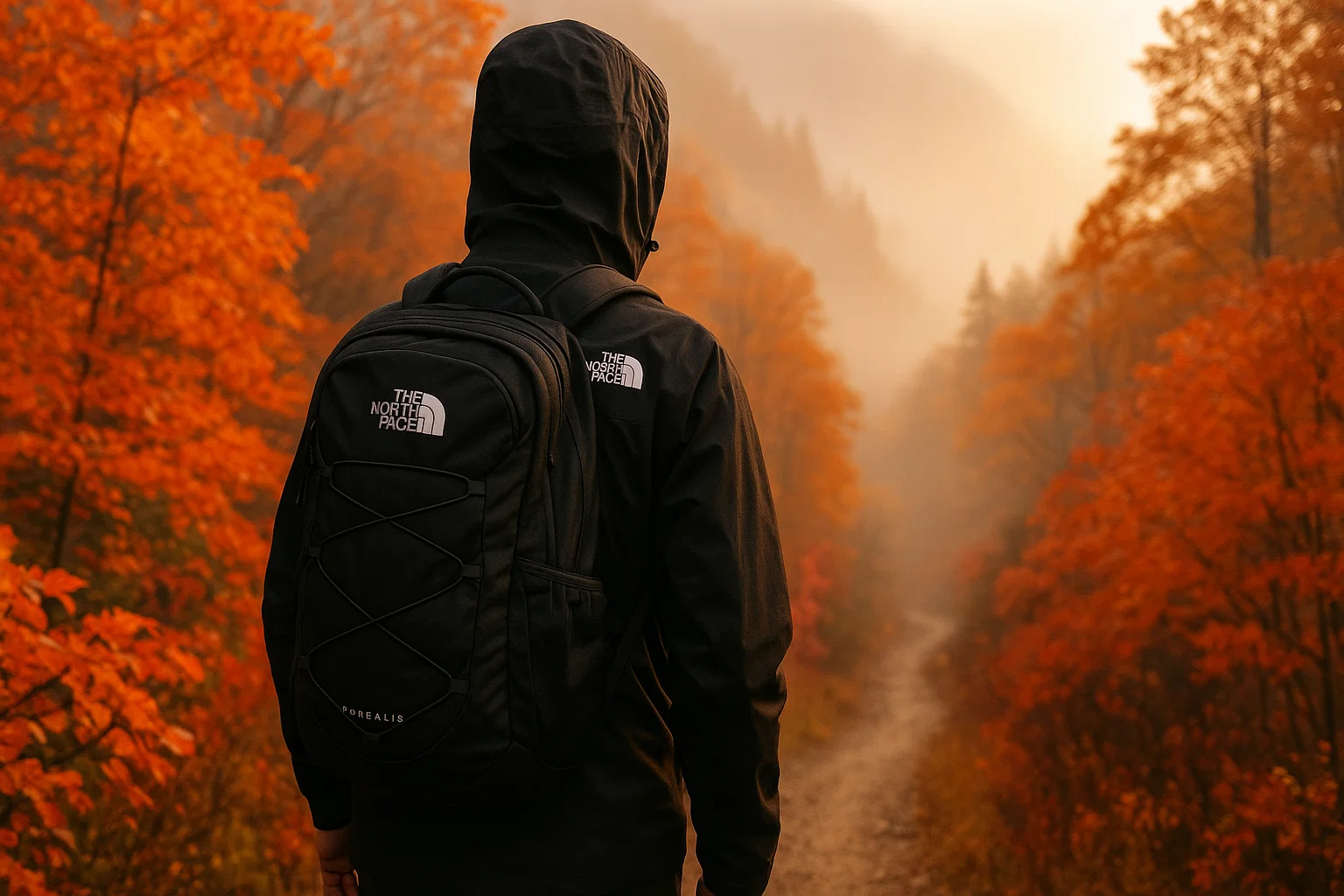
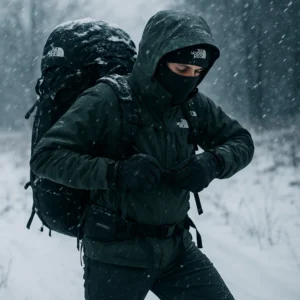
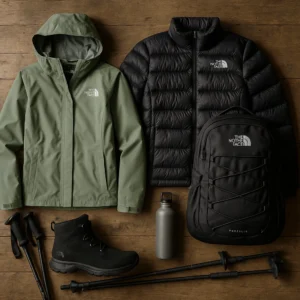
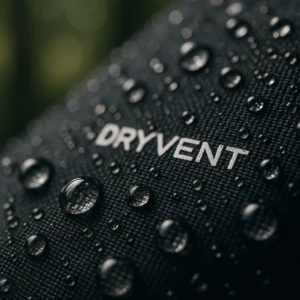
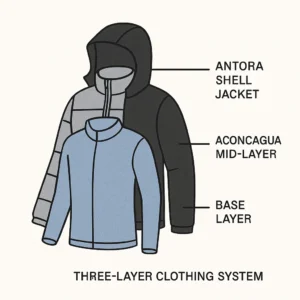
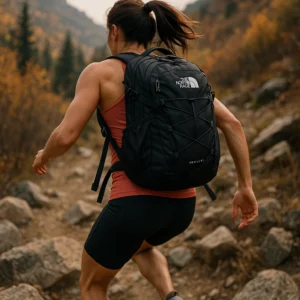
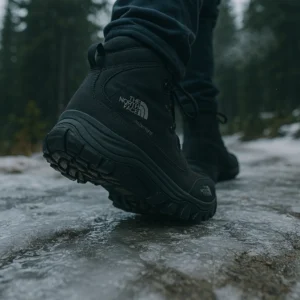

Leave a Reply